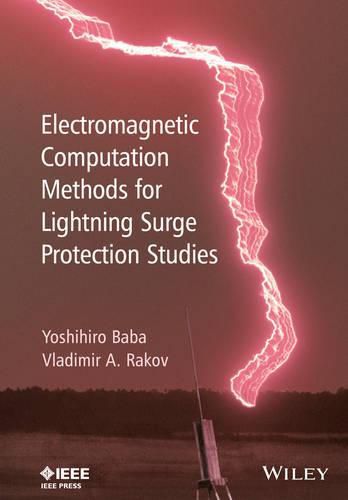Readings Newsletter
Become a Readings Member to make your shopping experience even easier.
Sign in or sign up for free!
You’re not far away from qualifying for FREE standard shipping within Australia
You’ve qualified for FREE standard shipping within Australia
The cart is loading…






Presents current research into electromagnetic computation theories with particular emphasis on Finite-Difference Time-Domain Method
This book is the first to consolidate current research and to examine the theories of electromagnetic computation methods in relation to lightning surge protection. The authors introduce and compare existing electromagnetic computation methods such as the method of moments (MOM), the partial element equivalent circuit (PEEC), the finite element method (FEM), the transmission-line modeling (TLM) method, and the finite-difference time-domain (FDTD) method. The application of FDTD method to lightning protection studies is a topic that has matured through many practical applications in the past decade, and the authors explain the derivation of Maxwell’s equations required by the FDTD, and modeling of various electrical components needed in computing lightning electromagnetic fields and surges with the FDTD method. The book describes the application of FDTD method to current and emerging problems of lightning surge protection of continuously more complex installations, particularly in critical infrastructures of energy and information, such as overhead power lines, air-insulated sub-stations, wind turbine generator towers and telecommunication towers.
Both authors are internationally recognized experts in the area of lightning study and this is the first book to present current research in lightning surge protection Examines in detail why lightning surges occur and what can be done to protect against them Includes theories of electromagnetic computation methods and many examples of their application Accompanied by a sample printed program based on the finite-difference time-domain (FDTD) method written in C++ program
$9.00 standard shipping within Australia
FREE standard shipping within Australia for orders over $100.00
Express & International shipping calculated at checkout
Presents current research into electromagnetic computation theories with particular emphasis on Finite-Difference Time-Domain Method
This book is the first to consolidate current research and to examine the theories of electromagnetic computation methods in relation to lightning surge protection. The authors introduce and compare existing electromagnetic computation methods such as the method of moments (MOM), the partial element equivalent circuit (PEEC), the finite element method (FEM), the transmission-line modeling (TLM) method, and the finite-difference time-domain (FDTD) method. The application of FDTD method to lightning protection studies is a topic that has matured through many practical applications in the past decade, and the authors explain the derivation of Maxwell’s equations required by the FDTD, and modeling of various electrical components needed in computing lightning electromagnetic fields and surges with the FDTD method. The book describes the application of FDTD method to current and emerging problems of lightning surge protection of continuously more complex installations, particularly in critical infrastructures of energy and information, such as overhead power lines, air-insulated sub-stations, wind turbine generator towers and telecommunication towers.
Both authors are internationally recognized experts in the area of lightning study and this is the first book to present current research in lightning surge protection Examines in detail why lightning surges occur and what can be done to protect against them Includes theories of electromagnetic computation methods and many examples of their application Accompanied by a sample printed program based on the finite-difference time-domain (FDTD) method written in C++ program